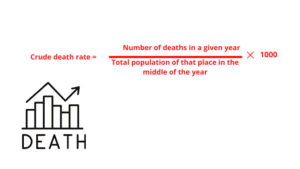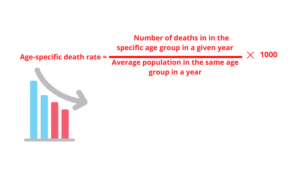
Introduction
The increase or decrease in the number or quantity of the population in the chronological stage is called population change. Populations around the world are always changing. But this change is not one-sided, it is multifaceted. Some components are responsible for this change in population. Below is a discussion of what are the components of population change.
Population refers to people who live and interact with each other in a particular territory. The death in a population or the emigration of its members results in the loss of a community or society. This decay is met by reproduction or immigration, even as the population grows. As a result the population changes (1) & (2).
What are the four components of population change?
Population change is a very important issue in a country. This changes the whole world depending on certain components. The components of this change are birth rate, mortality rate, immigration, emigration. How all these components play a role in population change is discussed here (3) & (4).
1. Birth rate
The birth rate is the number of live births per thousand of the population during a year for a certain territory. Change in the population depends on the birth rate. Usually, women have fertility from 15 years to 45 or 49 years of age.
The void created by human mortality is filled through the birth of children. There are some methods of measuring the birth rate. The most common method is the crude birth rate.
-
Crude birth rate
The ratio of the total number of live births in a population during a given year and the total mid-year population for the same year is called the crude birth rate.
Formula

-
General fertility rate
The ratio of total yearly registered live births to the female population of childbearing age from 15 to 49 years is known as the general fertility rate.
Formula

-
Fertility ratio
Fertility ratio is the ratio between the whole female population of 15 to 49 years of age and the number of live births in a year.
Formula

-
Total fertility rate
The average number of babies born per capita by women between the ages of 15 to 49 is called the total fertility rate.
Formula

-
Age-specific birth rate
The Age-specific birth rate is the annual number of births to women of a specific age group per 1000 women in that age group.
Formula

2. Death rate
The death rate is the number of people of different ages in a population of a country or region who die at different times of the year. Like any member of the animal kingdom, man is mortal. Birth and death are an integral part of human life.
Life begins at birth and ends at death. Society is not mortal even if people die. Because the decay of society as a result of death is filled through birth.
Fertility and mortality maintain a numerical balance in society. However, mortality can also indirectly affect fertility. Infant death rates have a significant impact on high fertility in developing regions of the world. Death rates also change the population. It is related to the population growth of a country or a region.
The death rate can be measured in three main ways (2) & (4).
-
Crude death rate
- The most common method of measuring death rate is the crude death rate.
- Crude death rate is calculated by dividing the total number of deaths in a given year by the mid-total population of that year.
- This rate is expressed as a percentage.
- To determine the crude birth rate, it is necessary to know the total population of a country or a region and the number of deaths in that year.
Formula

Advantage
- This method can be used to determine the death rate with the help of short statistics.
- If the crude birth rate is known, the normal growth rate of the population can be determined.
Disadvantage
- In this method, the difference in the death rate of a place is not easily understood.
- The cause of death cannot be determined by that method.
-
Age-specific death rate
The death rate seen in different age groups of people in a country is called the age-specific death rate. The total population is divided into different age groups. Then the number of deaths in each of those age groups and the ratio of the total population to that age group is the age-specific death rate.
Formula

-
Child mortality rate
The number of infant deaths relative to the total number of babies born in a country is considered to be the child mortality rate or infant mortality rate or Trend of infant mortality. That is the ratio of the number of babies born in a year and the number of babies who have died in the infant mortality rate.
Formula

3. Immigration
When a foreign citizen moves to another country for permanent residence, the process is known as immigration. In this case, people leave their own country to live in another country. So they are called immigrants.
Immigration is one of the components of population change. In this case, the population of the area where the immigrants come and live increases. Which has a profound effect on population change in this country.
Formula

Immigration rate = the total number of travelers arriving in a country or region/ the total population of the place of origin or place of destination* 1000 (1).
4. Emigration
Emigration is the process by which some of the inhabitants of a country leave their homeland and settle in another country. Those who leave their home country and settle in another country are called emigrants. These components also play a role in population change.
Formula

The above components play an important role both directly and indirectly in changing the population.
Mathematical summarization of components of population change
The population change = (Birth rate + immigration) – (Death rate + emigration).
Q&A
1. Why components of population change are important?
- The study of population change helps to understand what changes occur in population size and growth rate.
- Population change describes the growth rate of a region or country.
- The study of population change gives scientists insights into how organisms interact with each other and their environment.
2. What are the components of population change?
The increase or decrease in the number or quantity of the population in a specific area during a certain time is called population change. There are mainly four components that play an important role in population change. These are-
- Birth rate
- Death rate
- Immigration &
- Emigration
Written By: Manisha Bharati
